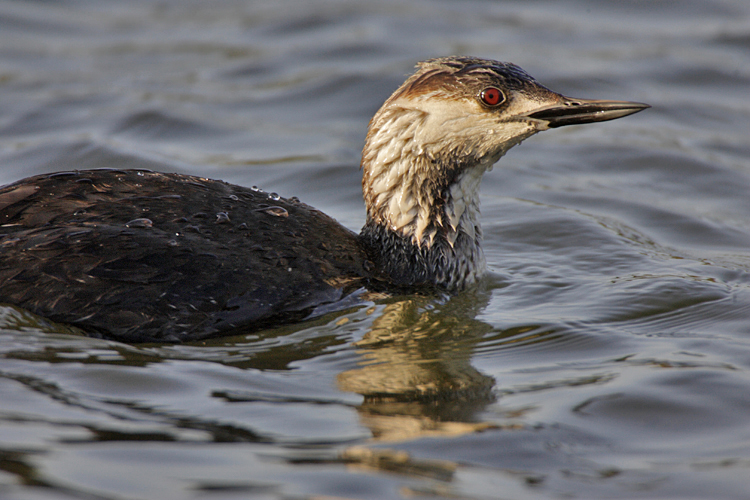
Date: 2008-05-08
Lens: Canon 600mm IS F4 + 2x Converter

 Red-Throated Loon
Gavia stellata
Red-Throated Loon
Gavia stellata
 Description
Description
The Red-throated Loon is different from the other loon species in many ways. The Red-throated is The smallest of the loons. It does not need to run long distances along the water's surface to takeoff, but can actually take flight directly from land if needed. It also forages at great distances from its breeding territory, often at sea or on a distant lake. The Red-throated Loon also doesn't carry its young on its back, like other loon species. Finally, while only males of other loon species vocalize, both the male and female Red-throated loons vocalize, and often together.
The Red-throated Loon feeds on fish that it pursues, and grabs with its bill, while under water. The prey is usually swallowed before the loon re-surfaces. After breeding, the loons move to coastal waters where they often gather in large flocks, especially near rich feeding areas. The birds generally roost on water, but will occasionally do so on land during the breeding season. Though loons in general are extremely awkward on land, the Red-throated Loon has been known to travel great distances on land.
The bird produces several calls. The characteristic call is a long, low-pitched whistle with some distinct interspersed notes, and is used to claim its territory. This call is made by both genders. The bird also produces a raven-like croaking call of warning when disturbed or threatened. It also has a short, frequently repeated, goose-like cackle, that it gives when flying over or near its territory.
General: Sexes similar. 21 to 27 inches in length. Its legs are set far back on its body.
Adult Alternate: Pale gray head and neck with very thin black-and-white stripes running vertically along nape. Red throat. White chest and belly. Plain, dark upperparts. Bill black with light stripe along top, and pale tip. Red eyes. Dark legs; sometimes has dark back and pale front.
Adult Basic: Gray cap, forehead, and nape. White chin, throat, face, and underparts. Dark back heavily speckled with white spots. Red eyes. Blue-gray bill with dark top edge. Legs dark on back and gray on front.
Immature: Similar to adult basic, but the front of the neck is mottled and the face pattern is less well-defined. Also, the upperparts are dull blackish-gray with white feather edges.
Large lakes during migration. Relatively shallow, sheltered marine habitat during Winter. Low tundra wetlands, bogs, and ponds in forests during breeding.
 Nesting
Nesting2 elongated eggs, with variable color ranging from brown to olive, with blotches or speckles. The eggs have a 24-29 day incubation period. Fledging occurs in 49-51 days. The Red-throated Loon builds two types of nests. One type is made of grass and moss and placed on low shorelines. The other is built up with aquatic vegetation in shallow water. The newly hatched loons are capable of swimming within 12 to 24 hours. Breeds at high latitudes in North America and Eurasia.